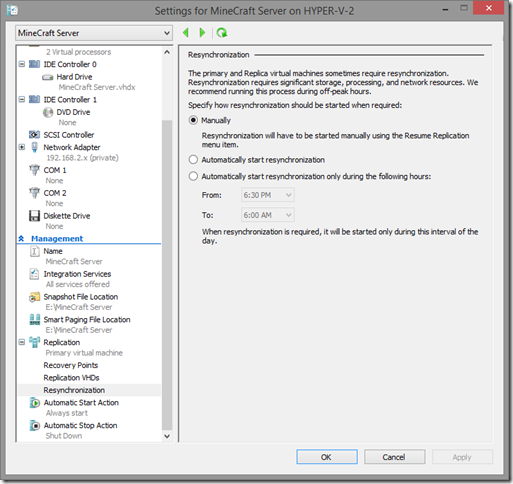Configuring Hyper-V Replica Resynchronization
If you have Hyper-V Replica enabled on a virtual machine, and Hyper-V is not able to send all disk changes across in a timely fashion, the replication relationship will eventually be put into a failed state. At this point in time you need to perform a resynchronization to get the replication relationship back to normal.
We do allow you to configure for automatic resynchronization – like this:
However, I do not enable this on my virtual machines – and I would encourage any users of Hyper-V Replica to be very careful about how and when they enable automatic resynchronization. There are two main reasons for this note of caution:
Resynchronization is a very heavy weight operation.
When a virtual machine is resynchronized there is a whole bunch of CPU, disk and network utilization going on. Chances are you do not want this happening at an unpredictable point in time. And you certainly do not want it happening for multiple virtual machines at the same time. If I were to enable automatic resynchronization, I would configure each virtual machine with a different resynchronization window to try and avoid multiple resynchronizations happening at the same time.
You want to know when things go wrong.
This is the real reason why I do not enable automatic resynchronization. If there is something going wrong in my environment that causes virtual machines to require resynchronization – I want to know! And I want to fix it so it does not happen again! I do not want to think that everything is fine when I actually have a problem to fix.
Cheers,
Ben
